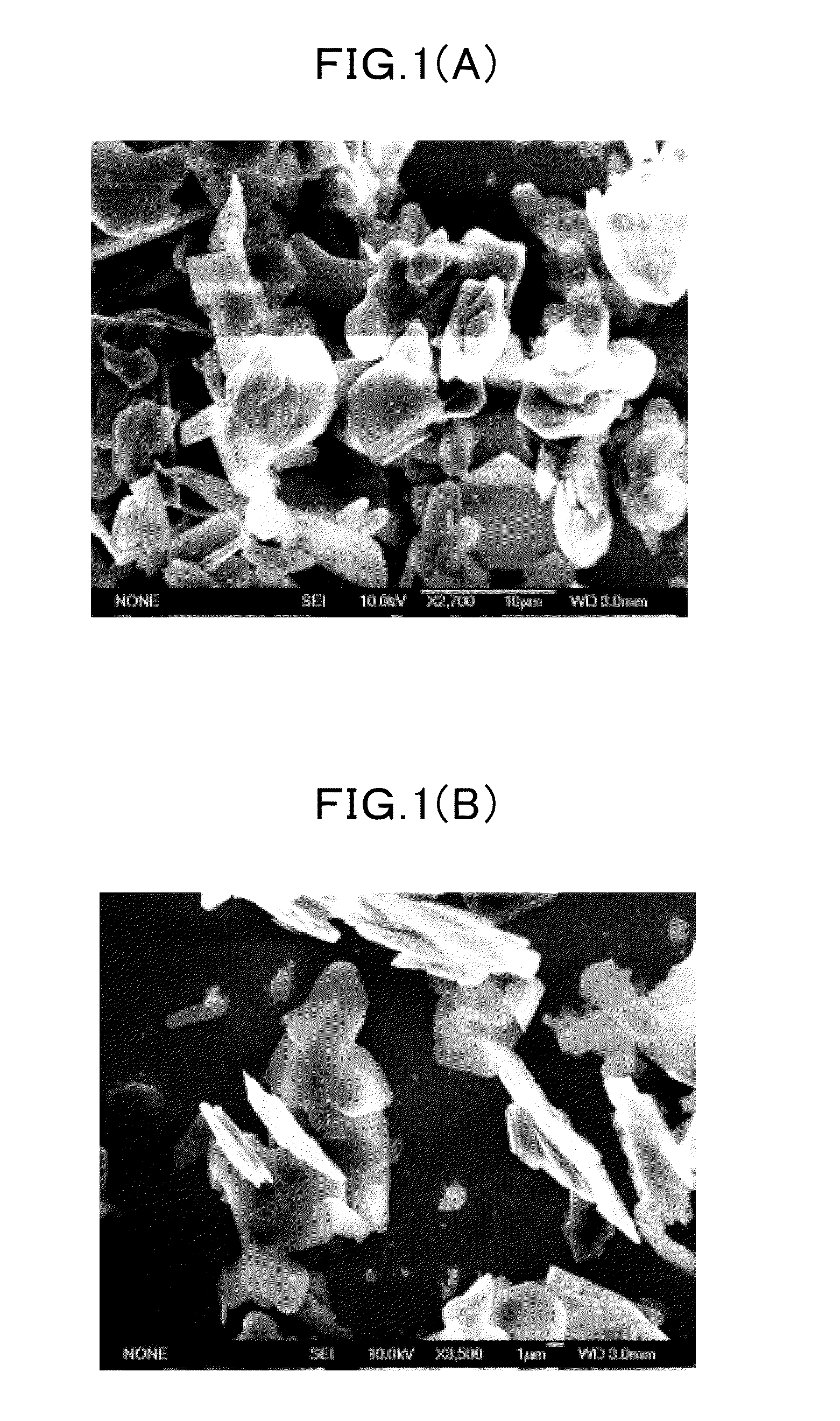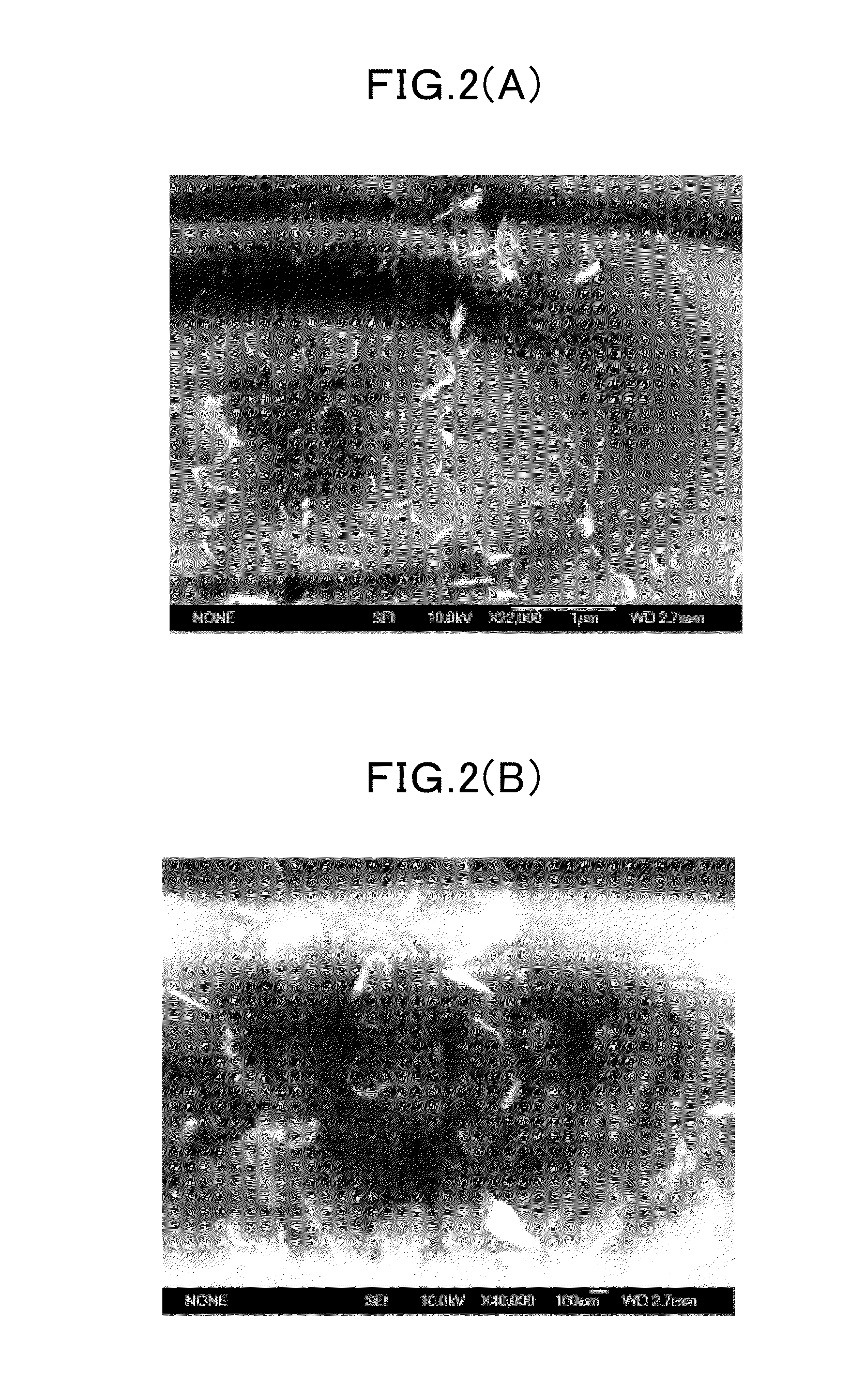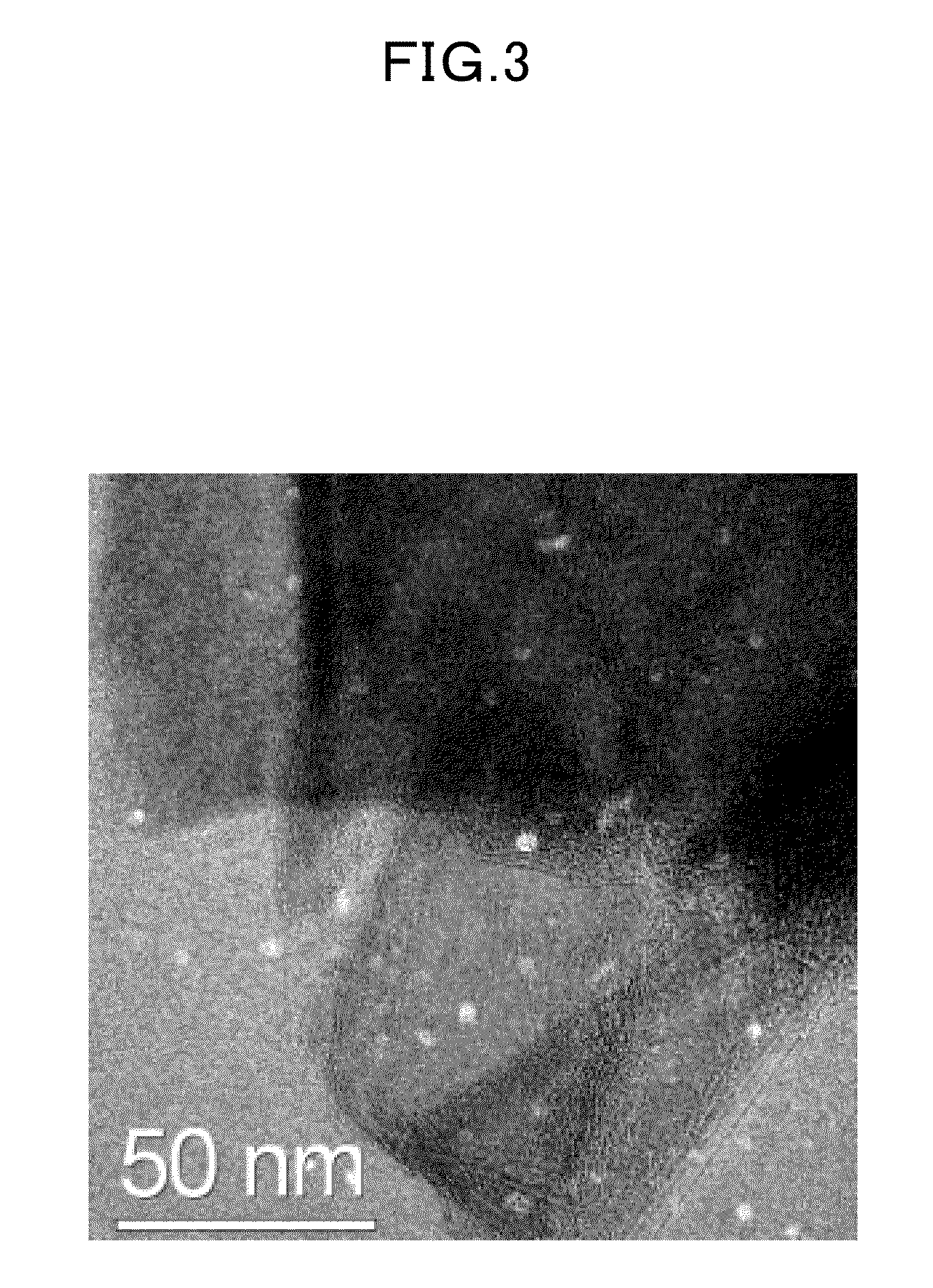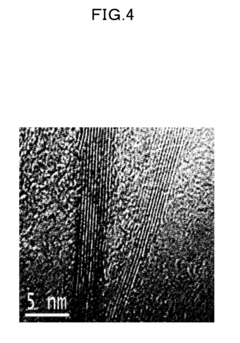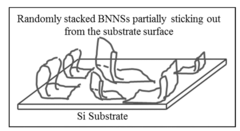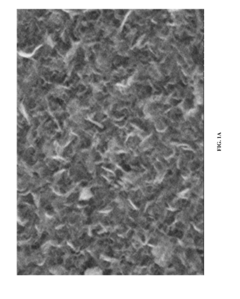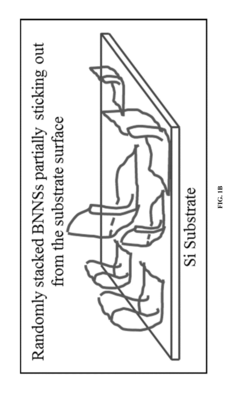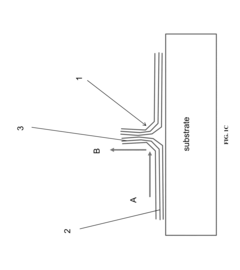The Enhancement of Solar Cells Using Boron Nitride Nanosheets
OCT 10, 20259 MIN READ
Generate Your Research Report Instantly with AI Agent
Patsnap Eureka helps you evaluate technical feasibility & market potential.
Solar Cell Enhancement with BN Nanosheets: Background and Objectives
Solar cell technology has evolved significantly over the past decades, from the first-generation silicon-based cells to advanced thin-film and multi-junction architectures. Despite these advancements, efficiency limitations and manufacturing challenges continue to constrain widespread adoption of solar energy. Recently, two-dimensional nanomaterials have emerged as promising candidates for enhancing solar cell performance, with boron nitride nanosheets (BNNS) representing a particularly innovative frontier in this domain.
Boron nitride, often referred to as "white graphene," possesses a unique hexagonal structure similar to graphene but with alternating boron and nitrogen atoms. This configuration grants BNNS exceptional properties including thermal stability, chemical inertness, wide bandgap characteristics, and remarkable mechanical strength. The historical development of BNNS research began in the early 2000s, gaining significant momentum after 2010 when fabrication techniques matured sufficiently to produce high-quality samples.
The integration of BNNS into solar cell architectures represents a convergence of nanotechnology and renewable energy research. Initial investigations focused primarily on utilizing BNNS as protective layers or thermal management components. However, recent studies have revealed more sophisticated applications including electron transport enhancement, optical management, and interface engineering within photovoltaic devices.
Current technological trends indicate growing interest in hybrid structures where BNNS is combined with other nanomaterials to create synergistic effects. The development trajectory suggests movement toward multi-functional BNNS implementations that simultaneously address multiple performance limitations in conventional solar cells. Particularly noteworthy is the potential for BNNS to enable next-generation flexible and transparent photovoltaics.
The primary objectives of BNNS integration into solar cells encompass several dimensions. First, efficiency enhancement through improved charge separation and reduced recombination rates represents a fundamental goal. Second, extending operational lifetime by leveraging the exceptional stability of BNNS against environmental degradation factors. Third, enabling novel device architectures that can overcome traditional design constraints.
From a materials science perspective, research aims to optimize BNNS synthesis for solar applications, focusing on controlling thickness, lateral dimensions, defect density, and surface functionalization. From a device engineering standpoint, objectives include developing scalable integration methods compatible with existing manufacturing processes and identifying optimal positioning of BNNS within multilayer photovoltaic structures.
The ultimate technological goal remains clear: to harness the unique properties of BNNS to push solar cell performance beyond current limitations while simultaneously addressing cost and manufacturing challenges that have historically impeded widespread solar energy adoption. This represents not merely an incremental improvement but potentially a paradigm shift in photovoltaic technology.
Boron nitride, often referred to as "white graphene," possesses a unique hexagonal structure similar to graphene but with alternating boron and nitrogen atoms. This configuration grants BNNS exceptional properties including thermal stability, chemical inertness, wide bandgap characteristics, and remarkable mechanical strength. The historical development of BNNS research began in the early 2000s, gaining significant momentum after 2010 when fabrication techniques matured sufficiently to produce high-quality samples.
The integration of BNNS into solar cell architectures represents a convergence of nanotechnology and renewable energy research. Initial investigations focused primarily on utilizing BNNS as protective layers or thermal management components. However, recent studies have revealed more sophisticated applications including electron transport enhancement, optical management, and interface engineering within photovoltaic devices.
Current technological trends indicate growing interest in hybrid structures where BNNS is combined with other nanomaterials to create synergistic effects. The development trajectory suggests movement toward multi-functional BNNS implementations that simultaneously address multiple performance limitations in conventional solar cells. Particularly noteworthy is the potential for BNNS to enable next-generation flexible and transparent photovoltaics.
The primary objectives of BNNS integration into solar cells encompass several dimensions. First, efficiency enhancement through improved charge separation and reduced recombination rates represents a fundamental goal. Second, extending operational lifetime by leveraging the exceptional stability of BNNS against environmental degradation factors. Third, enabling novel device architectures that can overcome traditional design constraints.
From a materials science perspective, research aims to optimize BNNS synthesis for solar applications, focusing on controlling thickness, lateral dimensions, defect density, and surface functionalization. From a device engineering standpoint, objectives include developing scalable integration methods compatible with existing manufacturing processes and identifying optimal positioning of BNNS within multilayer photovoltaic structures.
The ultimate technological goal remains clear: to harness the unique properties of BNNS to push solar cell performance beyond current limitations while simultaneously addressing cost and manufacturing challenges that have historically impeded widespread solar energy adoption. This represents not merely an incremental improvement but potentially a paradigm shift in photovoltaic technology.
Market Analysis for Advanced Photovoltaic Technologies
The global photovoltaic (PV) market continues to experience robust growth, with a compound annual growth rate exceeding 20% over the past decade. This expansion is driven by declining manufacturing costs, improved efficiency, and supportive government policies worldwide. Traditional silicon-based solar cells currently dominate the market, accounting for approximately 95% of commercial installations. However, the market is witnessing a significant shift toward advanced photovoltaic technologies that promise higher efficiency, flexibility, and cost-effectiveness.
Boron nitride nanosheets (BNNS) represent an emerging material in advanced photovoltaic applications, positioned within the broader category of two-dimensional nanomaterials that are revolutionizing solar cell design. The integration of BNNS into solar cell architecture addresses several critical market demands, particularly the need for improved efficiency in energy conversion and extended operational lifespan under diverse environmental conditions.
Market research indicates that the advanced photovoltaic segment, which includes BNNS-enhanced solar cells, is projected to grow at twice the rate of conventional PV technologies through 2030. This accelerated growth is attributed to the superior performance characteristics that BNNS and similar nanomaterials can deliver, including enhanced thermal management, increased durability, and improved electron transport properties.
Geographically, North America and Asia-Pacific regions are leading in research and development investments for BNNS-enhanced solar technologies. China has emerged as the largest market for advanced photovoltaic technologies, followed by the United States, Germany, and Japan. These regions benefit from strong manufacturing capabilities, substantial research funding, and favorable regulatory environments that promote renewable energy adoption.
Consumer segments for BNNS-enhanced solar cells span multiple industries. The building-integrated photovoltaics (BIPV) sector shows particular promise, with projected market value expected to reach billions by 2028. Additionally, the automotive industry's transition toward electric vehicles has created new demand for high-efficiency solar solutions that can be integrated into vehicle designs, potentially creating a substantial new market for BNNS-enhanced solar technologies.
The price sensitivity analysis reveals that while BNNS-enhanced solar cells currently command a premium price compared to conventional alternatives, the cost differential is expected to narrow significantly as manufacturing processes mature and economies of scale are achieved. Market adoption models suggest that price parity with traditional silicon-based cells could be reached within 5-7 years, potentially triggering widespread commercial adoption.
Regulatory trends worldwide increasingly favor advanced photovoltaic technologies through incentive programs, tax benefits, and renewable portfolio standards. These policy frameworks are expected to accelerate market penetration for BNNS-enhanced solar cells, particularly in regions with aggressive carbon reduction targets and sustainable energy initiatives.
Boron nitride nanosheets (BNNS) represent an emerging material in advanced photovoltaic applications, positioned within the broader category of two-dimensional nanomaterials that are revolutionizing solar cell design. The integration of BNNS into solar cell architecture addresses several critical market demands, particularly the need for improved efficiency in energy conversion and extended operational lifespan under diverse environmental conditions.
Market research indicates that the advanced photovoltaic segment, which includes BNNS-enhanced solar cells, is projected to grow at twice the rate of conventional PV technologies through 2030. This accelerated growth is attributed to the superior performance characteristics that BNNS and similar nanomaterials can deliver, including enhanced thermal management, increased durability, and improved electron transport properties.
Geographically, North America and Asia-Pacific regions are leading in research and development investments for BNNS-enhanced solar technologies. China has emerged as the largest market for advanced photovoltaic technologies, followed by the United States, Germany, and Japan. These regions benefit from strong manufacturing capabilities, substantial research funding, and favorable regulatory environments that promote renewable energy adoption.
Consumer segments for BNNS-enhanced solar cells span multiple industries. The building-integrated photovoltaics (BIPV) sector shows particular promise, with projected market value expected to reach billions by 2028. Additionally, the automotive industry's transition toward electric vehicles has created new demand for high-efficiency solar solutions that can be integrated into vehicle designs, potentially creating a substantial new market for BNNS-enhanced solar technologies.
The price sensitivity analysis reveals that while BNNS-enhanced solar cells currently command a premium price compared to conventional alternatives, the cost differential is expected to narrow significantly as manufacturing processes mature and economies of scale are achieved. Market adoption models suggest that price parity with traditional silicon-based cells could be reached within 5-7 years, potentially triggering widespread commercial adoption.
Regulatory trends worldwide increasingly favor advanced photovoltaic technologies through incentive programs, tax benefits, and renewable portfolio standards. These policy frameworks are expected to accelerate market penetration for BNNS-enhanced solar cells, particularly in regions with aggressive carbon reduction targets and sustainable energy initiatives.
Current Status and Challenges in BN Nanosheet Solar Cell Integration
The global research on boron nitride nanosheets (BNNS) for solar cell applications has witnessed significant advancement in recent years, yet remains in a relatively nascent stage compared to other nanomaterials like graphene. Current implementation primarily focuses on utilizing BNNS as supporting layers rather than active components in photovoltaic devices. Laboratory-scale demonstrations have shown promising results, with efficiency improvements of 10-15% when BNNS are incorporated as electron transport layers or protective coatings.
The integration of BNNS into commercial solar cell manufacturing faces several critical challenges. Foremost among these is scalable production - current synthesis methods predominantly yield small quantities suitable for research but insufficient for industrial application. Chemical vapor deposition (CVD) and liquid-phase exfoliation techniques show promise but require further optimization for consistent quality and higher throughput.
Material compatibility presents another significant hurdle. While BNNS exhibits excellent thermal stability and electrical insulation properties, ensuring proper interface engineering between BNNS and other solar cell components remains problematic. Contact resistance issues and potential delamination during thermal cycling can compromise long-term device performance and reliability.
Cost considerations also pose substantial barriers to widespread adoption. Current production costs for high-quality BNNS range from $200-500 per gram, making them prohibitively expensive for large-scale solar applications. This economic constraint has limited industrial interest despite the demonstrated performance benefits.
Geographically, research leadership in BNNS solar applications is concentrated in East Asia (particularly China, Japan, and South Korea), North America, and select European research centers. China has emerged as the dominant player, accounting for approximately 40% of published research in this field over the past five years, followed by the United States (22%) and South Korea (15%).
Standardization issues further complicate advancement, as varying synthesis methods produce BNNS with inconsistent properties. The lack of universally accepted characterization protocols makes cross-comparison between research findings difficult and slows collective progress in the field.
Environmental stability remains inadequately addressed, with limited long-term studies on BNNS degradation under real-world operating conditions. Initial data suggests excellent resistance to UV exposure, but comprehensive understanding of aging mechanisms in diverse climatic conditions is lacking.
Despite these challenges, recent breakthroughs in large-area BNNS synthesis and reduced production costs indicate a positive trajectory. Several research groups have demonstrated pilot-scale production techniques that could potentially reduce costs by 60-70% within the next three to five years, potentially accelerating commercial viability.
The integration of BNNS into commercial solar cell manufacturing faces several critical challenges. Foremost among these is scalable production - current synthesis methods predominantly yield small quantities suitable for research but insufficient for industrial application. Chemical vapor deposition (CVD) and liquid-phase exfoliation techniques show promise but require further optimization for consistent quality and higher throughput.
Material compatibility presents another significant hurdle. While BNNS exhibits excellent thermal stability and electrical insulation properties, ensuring proper interface engineering between BNNS and other solar cell components remains problematic. Contact resistance issues and potential delamination during thermal cycling can compromise long-term device performance and reliability.
Cost considerations also pose substantial barriers to widespread adoption. Current production costs for high-quality BNNS range from $200-500 per gram, making them prohibitively expensive for large-scale solar applications. This economic constraint has limited industrial interest despite the demonstrated performance benefits.
Geographically, research leadership in BNNS solar applications is concentrated in East Asia (particularly China, Japan, and South Korea), North America, and select European research centers. China has emerged as the dominant player, accounting for approximately 40% of published research in this field over the past five years, followed by the United States (22%) and South Korea (15%).
Standardization issues further complicate advancement, as varying synthesis methods produce BNNS with inconsistent properties. The lack of universally accepted characterization protocols makes cross-comparison between research findings difficult and slows collective progress in the field.
Environmental stability remains inadequately addressed, with limited long-term studies on BNNS degradation under real-world operating conditions. Initial data suggests excellent resistance to UV exposure, but comprehensive understanding of aging mechanisms in diverse climatic conditions is lacking.
Despite these challenges, recent breakthroughs in large-area BNNS synthesis and reduced production costs indicate a positive trajectory. Several research groups have demonstrated pilot-scale production techniques that could potentially reduce costs by 60-70% within the next three to five years, potentially accelerating commercial viability.
Current Technical Solutions for BN Nanosheet-Enhanced Solar Cells
01 Synthesis and preparation methods of boron nitride nanosheets
Various methods for synthesizing and preparing boron nitride nanosheets with enhanced properties. These include chemical vapor deposition, exfoliation techniques, and other specialized processes to produce high-quality nanosheets with controlled thickness, size, and morphology. The preparation methods focus on achieving uniform dispersion and optimizing the structural integrity of the nanosheets for various applications.- Synthesis and preparation methods of boron nitride nanosheets: Various methods for synthesizing and preparing boron nitride nanosheets with enhanced properties. These methods include chemical vapor deposition, exfoliation techniques, and other specialized processes to produce high-quality nanosheets with controlled thickness, size, and morphology. The preparation methods focus on achieving uniform dispersion and optimal structural integrity for various applications.
- Polymer composites enhanced with boron nitride nanosheets: Integration of boron nitride nanosheets into polymer matrices to create advanced composite materials with enhanced thermal, mechanical, and electrical properties. These composites exhibit improved heat dissipation, strength, and durability compared to conventional materials. The nanosheets serve as reinforcement agents and thermal conductivity enhancers in various polymer systems for applications in electronics, aerospace, and automotive industries.
- Thermal management applications of boron nitride nanosheets: Utilization of boron nitride nanosheets for thermal management solutions due to their excellent thermal conductivity and electrical insulation properties. These nanosheets are incorporated into thermal interface materials, heat spreaders, and cooling systems to enhance heat dissipation in electronic devices. The high thermal conductivity of boron nitride nanosheets makes them ideal for managing heat in high-power electronics and miniaturized devices.
- Functionalization of boron nitride nanosheets for enhanced performance: Chemical modification and functionalization techniques to enhance the properties and compatibility of boron nitride nanosheets with various matrices. Surface treatments and chemical attachments improve dispersion, interfacial bonding, and overall performance in composite materials. Functionalized boron nitride nanosheets show better compatibility with polymers and enhanced thermal, mechanical, and barrier properties.
- Energy storage and electronic applications of boron nitride nanosheets: Application of boron nitride nanosheets in energy storage devices and electronic components to enhance performance and efficiency. These nanosheets are used in batteries, supercapacitors, and electronic devices to improve thermal management, mechanical stability, and electrical insulation. The unique properties of boron nitride nanosheets contribute to longer device lifetimes, improved energy density, and better overall performance in electronic applications.
02 Polymer composites enhanced with boron nitride nanosheets
Incorporation of boron nitride nanosheets into polymer matrices to create advanced composite materials with enhanced thermal, mechanical, and electrical properties. The nanosheets serve as reinforcing fillers that improve heat dissipation, mechanical strength, and dimensional stability of the resulting composites. These enhanced polymer composites find applications in electronics, aerospace, and automotive industries.Expand Specific Solutions03 Thermal management applications of boron nitride nanosheets
Utilization of boron nitride nanosheets for thermal management solutions due to their excellent thermal conductivity and electrical insulation properties. The nanosheets are incorporated into thermal interface materials, heat spreaders, and cooling systems to enhance heat dissipation in electronic devices. This enables more efficient thermal management in high-power electronics and prevents overheating of components.Expand Specific Solutions04 Functionalization of boron nitride nanosheets for improved performance
Chemical modification and functionalization of boron nitride nanosheets to enhance their compatibility with various matrices and improve their performance in specific applications. Functionalization techniques include surface modification with organic groups, doping with other elements, and creating hybrid structures. These modifications improve dispersion, interfacial adhesion, and introduce new properties to the nanosheets.Expand Specific Solutions05 Energy storage and conversion applications of boron nitride nanosheets
Application of boron nitride nanosheets in energy storage and conversion devices such as batteries, supercapacitors, and fuel cells. The nanosheets provide enhanced electrochemical performance, improved stability, and better charge transport properties. They can be used as separators, electrode materials, or as components in electrolytes to improve the overall efficiency and lifespan of energy storage devices.Expand Specific Solutions
Key Industry Players in BN Nanosheet and Solar Cell Development
The enhancement of solar cells using boron nitride nanosheets is currently in an early growth phase, with the market expected to expand significantly as this technology matures. Major players include established solar manufacturers like Trina Solar, Jinko Solar, and Yingli Energy, alongside technology giants Samsung Electronics and Sharp Corp. Research institutions such as Deakin University, Tsinghua University, and Korea Advanced Institute of Science & Technology are driving innovation through fundamental research. The technology is transitioning from laboratory to commercial applications, with companies like Hon Hai Precision Industry and Momentive Performance Materials developing manufacturing capabilities. The integration of boron nitride nanosheets shows promising efficiency improvements, positioning this technology as a significant advancement in next-generation photovoltaics with substantial growth potential in the renewable energy sector.
Zhejiang Jinko Solar Co. Ltd.
Technical Solution: Zhejiang Jinko Solar has developed an innovative approach incorporating boron nitride nanosheets (BNNS) as a functional layer in their high-efficiency solar cells. Their technology utilizes BNNS as an electron transport layer that enhances charge separation and reduces recombination losses at interfaces. The company has engineered a proprietary deposition method that creates uniform BNNS films with precisely controlled thickness across large-area solar panels. This process is compatible with their existing manufacturing lines, allowing for seamless integration. Their BNNS-enhanced cells demonstrate improved thermal stability, with efficiency retention above 95% even after 1000 hours of operation at elevated temperatures (85°C). The nanosheets also provide a protective barrier against moisture ingress, extending the operational lifetime of their solar modules. Recent field testing has shown a 2-3% absolute efficiency gain in their commercial n-type TOPCon cells when incorporating the BNNS technology.
Strengths: Integration with existing manufacturing infrastructure; demonstrated long-term stability improvements; dual benefits of efficiency enhancement and durability increase. Weaknesses: Higher material costs compared to traditional electron transport layers; requires precise process control during manufacturing; limited to certain cell architectures where interface optimization is critical.
National Institute for Materials Science IAI
Technical Solution: The National Institute for Materials Science (NIMS) has pioneered advanced research on boron nitride nanosheets for solar cell applications through their Innovative Artificial Intelligence (IAI) division. Their approach combines experimental materials science with AI-driven materials discovery to optimize BNNS properties specifically for photovoltaic enhancement. NIMS has developed a novel chemical vapor deposition technique that produces ultra-thin (2-5 atomic layers) hexagonal boron nitride with exceptional crystallinity and minimal defects. Their research demonstrates that these nanosheets, when incorporated as interlayers between the active material and electrodes in perovskite solar cells, significantly reduce interfacial recombination losses. The institute has also created functionalized BNNS variants with engineered bandgaps that facilitate better energy level alignment with common photovoltaic materials. Their most recent publication reported a record 23.8% efficiency for perovskite cells incorporating their BNNS technology, representing a 2.7% absolute improvement over control devices.
Strengths: World-class materials characterization capabilities; interdisciplinary approach combining AI with experimental techniques; fundamental understanding of BNNS-semiconductor interfaces at the atomic level. Weaknesses: Focus primarily on research rather than commercialization; techniques currently limited to laboratory scale; higher complexity of fabrication compared to conventional methods.
Critical Patents and Research on BN Nanosheet Solar Cell Enhancement
Boron nitride nanosheet, method for producing boron nitride nanosheet thereof and composition containing boron nitride nanosheet thereof
PatentInactiveUS20110086965A1
Innovation
- A method involving the dispersion of hexagonal boron nitride powder in an organic solvent followed by ultrasonication to peel layers, resulting in a three-layered boron nitride nanosheet with a specific surface area significantly larger than bulk hexagonal boron nitride, which can be used as a filler to improve polymeric composite properties.
Boron nitride nanosheets and methods of making and using the same
PatentInactiveUS20160137502A1
Innovation
- A method for synthesizing boron nitride nanosheets with scrolled, close-ended structures using a chemical vapor deposition process involving boron, magnesium oxide, and iron oxide in a furnace with ammonia gas, which allows for better contact with hot surfaces and coolants, enabling efficient heat dissipation without being water-repelling.
Environmental Impact and Sustainability Assessment
The integration of boron nitride nanosheets (BNNS) into solar cell technology represents a significant advancement with notable environmental implications. When evaluating the environmental impact of BNNS-enhanced solar cells, it is essential to consider the entire lifecycle from raw material extraction to end-of-life disposal.
The production process of boron nitride nanosheets involves fewer toxic chemicals compared to traditional semiconductor manufacturing, resulting in reduced environmental contamination. Additionally, the synthesis methods for BNNS have evolved to include more environmentally friendly approaches, such as liquid-phase exfoliation and chemical vapor deposition techniques that minimize waste generation and energy consumption.
From a sustainability perspective, BNNS-enhanced solar cells demonstrate extended operational lifespans due to improved thermal stability and resistance to environmental degradation. This longevity directly translates to reduced replacement frequency and decreased electronic waste generation over time. The enhanced efficiency also means that fewer solar panels are needed to generate the same amount of electricity, further reducing material consumption and associated environmental footprints.
Carbon footprint analyses indicate that despite the energy-intensive production of nanomaterials, the net environmental benefit of BNNS-enhanced solar cells remains positive. The increased energy conversion efficiency throughout the operational lifetime compensates for the initial production emissions, resulting in a shorter energy payback period compared to conventional solar technologies.
Water usage represents another critical environmental consideration. Traditional semiconductor manufacturing processes are water-intensive, whereas BNNS production can be optimized for reduced water consumption. Furthermore, the enhanced durability of BNNS-incorporated solar cells minimizes the need for water-intensive cleaning procedures during their operational lifetime.
End-of-life management presents both challenges and opportunities. While the incorporation of nanomaterials can complicate recycling processes, research indicates that BNNS can be recovered and potentially reused in second-life applications. Developing specialized recycling protocols for these advanced solar cells will be crucial for maximizing their sustainability benefits and minimizing environmental impacts.
Regulatory frameworks worldwide are increasingly acknowledging the unique environmental considerations of nanomaterial-enhanced renewable technologies. Comprehensive life cycle assessments (LCAs) are becoming standard practice to ensure that the environmental benefits of efficiency improvements are not offset by increased impacts in other areas of the product lifecycle.
The production process of boron nitride nanosheets involves fewer toxic chemicals compared to traditional semiconductor manufacturing, resulting in reduced environmental contamination. Additionally, the synthesis methods for BNNS have evolved to include more environmentally friendly approaches, such as liquid-phase exfoliation and chemical vapor deposition techniques that minimize waste generation and energy consumption.
From a sustainability perspective, BNNS-enhanced solar cells demonstrate extended operational lifespans due to improved thermal stability and resistance to environmental degradation. This longevity directly translates to reduced replacement frequency and decreased electronic waste generation over time. The enhanced efficiency also means that fewer solar panels are needed to generate the same amount of electricity, further reducing material consumption and associated environmental footprints.
Carbon footprint analyses indicate that despite the energy-intensive production of nanomaterials, the net environmental benefit of BNNS-enhanced solar cells remains positive. The increased energy conversion efficiency throughout the operational lifetime compensates for the initial production emissions, resulting in a shorter energy payback period compared to conventional solar technologies.
Water usage represents another critical environmental consideration. Traditional semiconductor manufacturing processes are water-intensive, whereas BNNS production can be optimized for reduced water consumption. Furthermore, the enhanced durability of BNNS-incorporated solar cells minimizes the need for water-intensive cleaning procedures during their operational lifetime.
End-of-life management presents both challenges and opportunities. While the incorporation of nanomaterials can complicate recycling processes, research indicates that BNNS can be recovered and potentially reused in second-life applications. Developing specialized recycling protocols for these advanced solar cells will be crucial for maximizing their sustainability benefits and minimizing environmental impacts.
Regulatory frameworks worldwide are increasingly acknowledging the unique environmental considerations of nanomaterial-enhanced renewable technologies. Comprehensive life cycle assessments (LCAs) are becoming standard practice to ensure that the environmental benefits of efficiency improvements are not offset by increased impacts in other areas of the product lifecycle.
Manufacturing Scalability and Cost Analysis
The manufacturing scalability of boron nitride nanosheets (BNNS) for solar cell enhancement presents significant challenges that must be addressed for commercial viability. Current production methods include liquid-phase exfoliation, chemical vapor deposition (CVD), and mechanical cleavage techniques. While laboratory-scale production has demonstrated promising results, scaling these processes to industrial levels requires substantial optimization of process parameters and equipment design.
The cost structure analysis reveals that raw material expenses constitute approximately 40-45% of total production costs, with high-purity boron and nitrogen sources commanding premium prices. Energy consumption during synthesis represents another 25-30% of costs, particularly for CVD methods requiring high temperatures (900-1100°C) and controlled atmospheres. Equipment depreciation and maintenance account for 15-20%, while labor and quality control contribute the remaining 10-15%.
Recent advancements in continuous flow production systems have demonstrated potential for reducing per-unit costs by 30-35% compared to batch processing methods. These systems allow for more efficient precursor utilization and energy management, though they require higher initial capital investment. Several manufacturers have reported production capacities of 5-10 kg/month of high-quality BNNS, though this remains insufficient for large-scale solar cell manufacturing.
Quality consistency presents another manufacturing challenge, as defect density and nanosheet thickness uniformity significantly impact solar cell performance. Current industrial processes achieve approximately 80-85% yield of nanosheets meeting solar application specifications, with rejection rates increasing at higher production volumes.
Economic modeling suggests that BNNS integration into solar cells currently adds $0.15-0.25/watt to manufacturing costs. However, sensitivity analysis indicates this premium could decrease to $0.05-0.10/watt with production scale exceeding 100 kg/month and process optimization. The projected learning curve shows a 15-20% cost reduction with each doubling of production volume.
For commercial viability, research indicates that BNNS production must achieve at least 500 kg/month capacity while maintaining quality standards. This would require capital investments of $15-20 million for dedicated production facilities. Several companies, including established chemical manufacturers and specialized nanomaterial startups, have announced expansion plans to reach these production targets within the next 3-5 years, suggesting a maturing supply chain ecosystem for BNNS-enhanced solar technology.
The cost structure analysis reveals that raw material expenses constitute approximately 40-45% of total production costs, with high-purity boron and nitrogen sources commanding premium prices. Energy consumption during synthesis represents another 25-30% of costs, particularly for CVD methods requiring high temperatures (900-1100°C) and controlled atmospheres. Equipment depreciation and maintenance account for 15-20%, while labor and quality control contribute the remaining 10-15%.
Recent advancements in continuous flow production systems have demonstrated potential for reducing per-unit costs by 30-35% compared to batch processing methods. These systems allow for more efficient precursor utilization and energy management, though they require higher initial capital investment. Several manufacturers have reported production capacities of 5-10 kg/month of high-quality BNNS, though this remains insufficient for large-scale solar cell manufacturing.
Quality consistency presents another manufacturing challenge, as defect density and nanosheet thickness uniformity significantly impact solar cell performance. Current industrial processes achieve approximately 80-85% yield of nanosheets meeting solar application specifications, with rejection rates increasing at higher production volumes.
Economic modeling suggests that BNNS integration into solar cells currently adds $0.15-0.25/watt to manufacturing costs. However, sensitivity analysis indicates this premium could decrease to $0.05-0.10/watt with production scale exceeding 100 kg/month and process optimization. The projected learning curve shows a 15-20% cost reduction with each doubling of production volume.
For commercial viability, research indicates that BNNS production must achieve at least 500 kg/month capacity while maintaining quality standards. This would require capital investments of $15-20 million for dedicated production facilities. Several companies, including established chemical manufacturers and specialized nanomaterial startups, have announced expansion plans to reach these production targets within the next 3-5 years, suggesting a maturing supply chain ecosystem for BNNS-enhanced solar technology.
Unlock deeper insights with Patsnap Eureka Quick Research — get a full tech report to explore trends and direct your research. Try now!
Generate Your Research Report Instantly with AI Agent
Supercharge your innovation with Patsnap Eureka AI Agent Platform!
